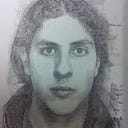Simple Timeline Animations —Elevating Animation Control and Cinematics in Unity3D
The combination of Unity’s Animation Window and Timeline, along with the Cinemachine camera system, opens up new dimensions of creativity and control. In this article, we will explore the benefits of using Unity’s Timeline on top of the Animation Window, with a focus on how it enhances animation and cinematic creation when combined with the versatile Cinemachine.
The Animation Window in Unity provides a precise environment for creating character and object animations. It offers features like keyframing, curves, and transitions, allowing developers to craft intricate animations that bring life to their game world. Unity’s Timeline takes animation control to the next level by allowing developers to sequence various animation clips, sounds, and effects into cinematic sequences. With the Timeline, you can orchestrate complex interactions and events, creating immersive storytelling experiences.
Benefits of Using Timeline:
- Seamless Integration: The Timeline smoothly integrates with the Animation Window, enabling a unified workflow that combines intricate animations with dynamic cinematic sequences.
- Holistic Control: Timeline empowers developers to control animations, camera movements, sound effects, and more within a single environment, resulting in coherent and captivating storytelling.
- Efficient Iteration: Timeline’s non-destructive editing allows for experimentation and iteration without altering the original animation data, saving valuable development time.
Create a Director for the Timeline, I will create an empty game object, call it Timeline_01 and add a Playable Director component to create the recordings.
I’ve set the Warp Mode to Loop and already binded the sphere to the timeline window. To do this, simply drag and drop the game object into Timeline window of the component with the Playable Director. It will ask for a type of track for it, for now select Animation Track.
With this set up, that object is ready for multiple animation seamlessly.
I am now recording the animation for a second object, and this is how simple it is. Simply hit record and record the new positions at their specific time. It can be so intuitive to even animate the object while observing how the other objects are moving. Truly the perspective of a director.
It is then possible to enter the specific animation as “recorded” and edit the keys individually. Simply right click the section of the recording with keys added and select Convert To Clip Track.
It will creat a Recorded track which can be accessed through the Animation window for better tweaking.
Combining Timeline with Cinemachine extends the possibilities for gameplay and storytelling:
- Dynamic Cutscenes: Create dynamic cutscenes by orchestrating animations, camera movements, and effects, immersing players in the game’s narrative.
- Interactive Experiences: Sequence gameplay events, reactions, and camera shifts to create interactive and engaging moments for players.
Unity’s Animation Window, Timeline, and Cinemachine complement each other harmoniously, providing developers with the tools they need to create animations and cinematic sequences that captivate and engage players. By utilizing the benefits of Timeline on top of the Animation Window, developers can elevate their projects to new heights of visual storytelling, enabling them to craft games that leave a lasting impact on players’ hearts and minds.
